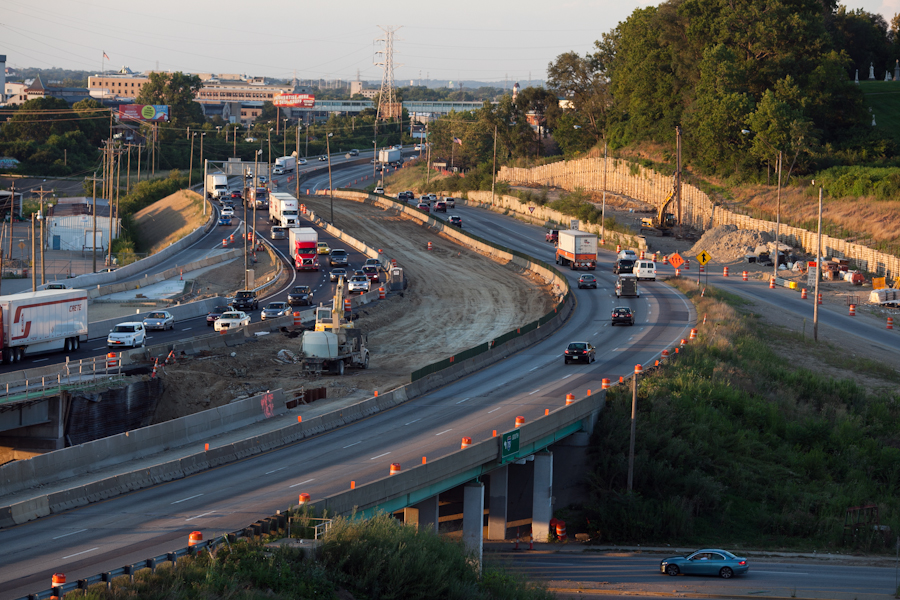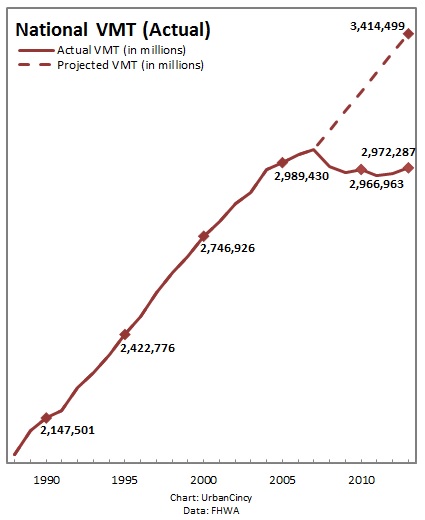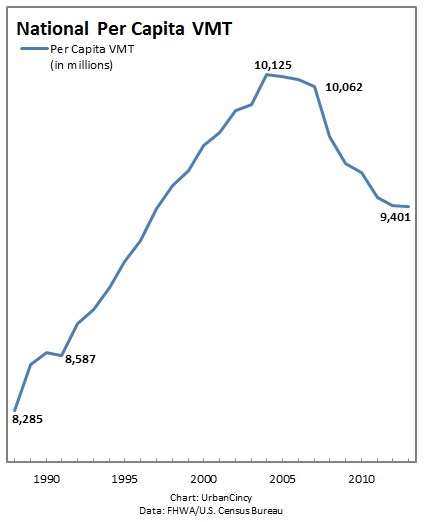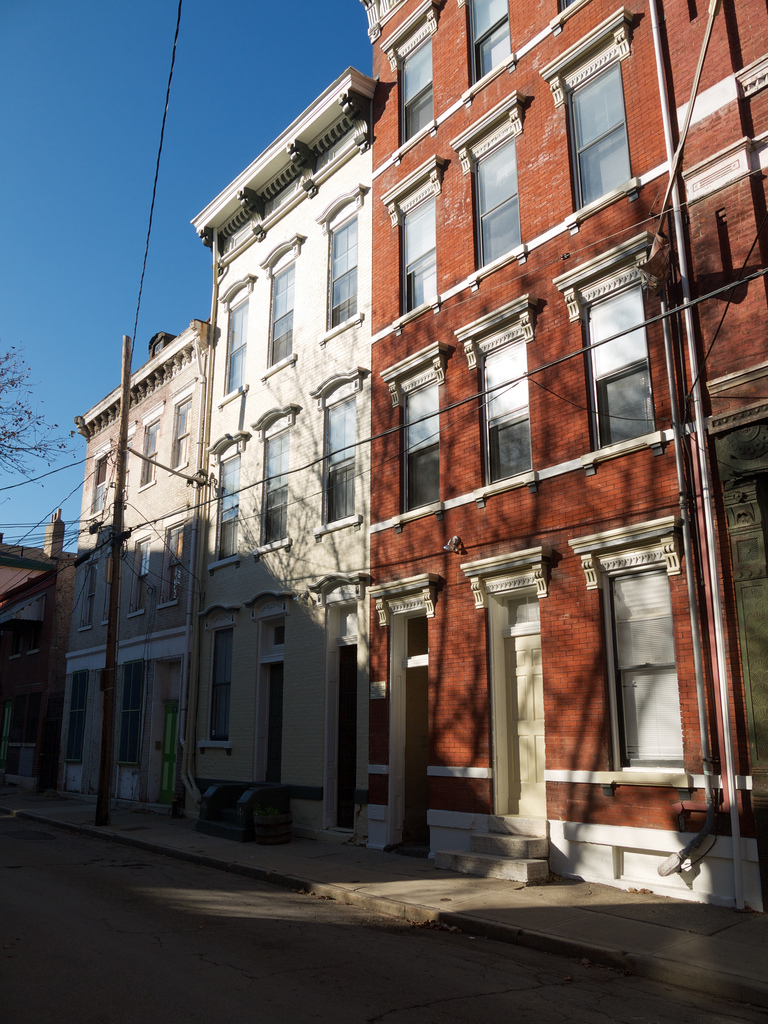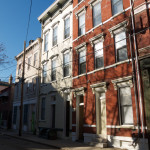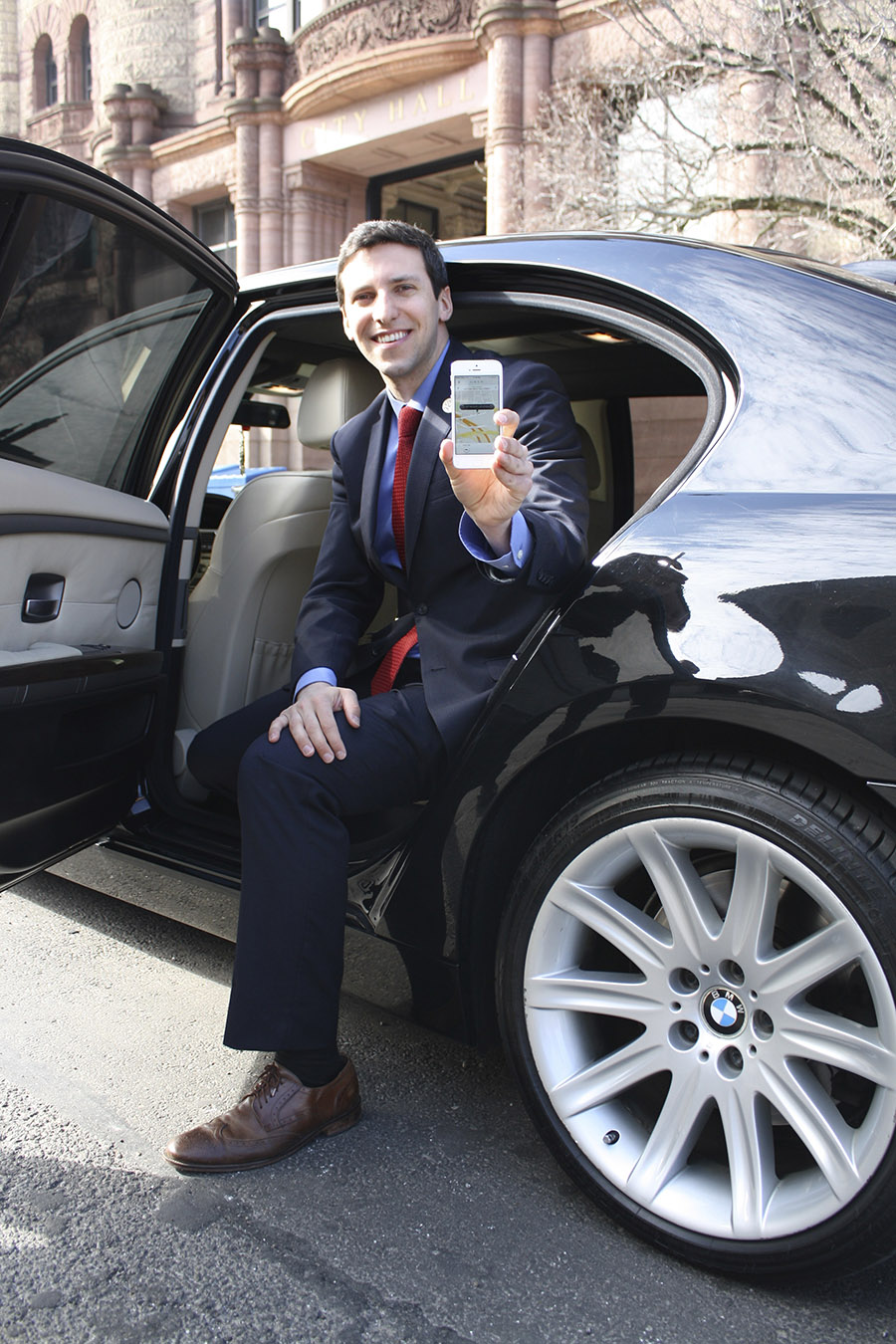Whether it is widening Martin Luther King Drive, adding a new interchange, building a new bridge, or adding additional capacity to existing streets throughout our cities, we always hear of the robust traffic growth that is anticipated. If nothing is done, then our communities would be stuck in gridlock.
But how have these projections actually measured up?
According to data from the Federal Highway Administration (FHWA) and cross examined with data from the U.S. Census Bureau, the traffic growth projections made by departments of transportation all over the country have been wildly off-base for the past decade.
Since the 1980s, traffic on our roadways, as measured by vehicle miles traveled (VMT), has increased by approximately 2.5% annually. That is until the early 2000s when that trend changed rather abruptly. Since 2007, actual VMT has decreased approximately .3% annually. Meanwhile, per capita VMT has fallen sharply.
Many analysts have noticed the trends, but have been cautious to make any judgments about them due to the fact that the change took place around the same time as the Great Recession. The common thought was that people without jobs drive less. Even though most economists, however, have noticed a rebounding economy over recent years, both actual and per capita VMT continues to decline.
The persistent trends may in fact be the new normal for America as Baby Boomers retire and Millennials and subsequent generations continue their pivot away from personal automobile use. If this is the case, it appears that the United States hit peak VMT in 2007.
The implications pose serious policy questions. Presently, most departments of transportation spend most of their money annually on new capacity projects, while letting existing infrastructure crumble. Some policy makers and organizations, like Smart Growth America and President Obama (D), who first proposed such a program during his 2013 State of the Union Address, have advocated for a shift in this position to a ‘Fix-It-First’ approach.
Time will only tell what future trends will show. But as of now we are experiencing, for the first time in our nation’s history, a constant period of decline in terms of the amount of driving we are doing.
